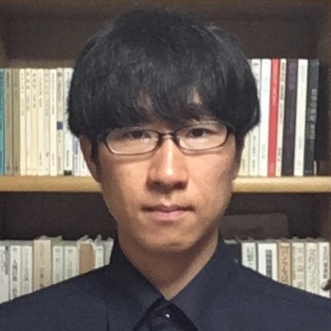One of the most salient proclivities that one can unmistakably find in those who have licensed the authorities to implement an array of biopolitical policies during the Covid-19 epidemic is the astoundingly fierce intensity with which they have exerted themselves to stifle and ostracize their dissenters.
Such dissenters are the fewer and politically weaker people who have held back from letting their freedoms be whittled away in exchange for safety, or, more precisely, for a possibility of safety from a new virus.
For instance, in Japan, where I live, not a few of the prefectural governors, despite their vocational duty to be highly circumspect about their speech and behavior toward the public, have unthinkingly stigmatized those citizens reluctant to obey their diktats which pressure them to stay at home.
The mass media, albeit often advocating diversity of viewpoints and values in their programs, have shamelessly diabolized the individuals prioritizing civic liberty over biological security. There are men collectively called the “mask police” who have resorted to even an illegitimate measure in order to force everyone to wear a face mask.
I have no intention to rebuke the pro-biopolitics majority or to claim the minority to be more sensible. Instead, I would like to explain the “scapegoat mechanism” and provide the readers with a theoretical tool with which they can freshly contemplate the ongoing conflict which may be far more pernicious to humanity than the virus itself.
As one who is well-versed in social philosophy can tell easily and rightly, the two most important theorists in this context are the American polymath Kenneth Burke and the French savant René Girard. One can be acquainted with the former’s theory in his 1945 book A Grammar of Motives, and the latter’s can be accessed in a number of his works like Violence and the Sacred (1972) and The Scapegoat (1982). In addition, a series of the Japanese intellectual Hitoshi Imamura’s elaborations of their discussions, which one can read in his Will to Criticism (1987), also deserves our serious attention.
The scapegoat mechanism is a speculative device to explain how some of the human systems, in a fairly broad sense of the phrase, establish and keep their order. The most fundamental tenet is that order is attained and sustained through the cyclic sacrifice of an entity that is internally excluded.
Let us make a survey of an archetypical system that can be elucidated quite elegantly with the aid of the mechanism: the way the state of a community shifts from a chaotic one to an ordered one.
A textbookish account would go as follows. A group of people does not become a stable community only by meeting the condition of being somehow distinctly separated from other communities. That is because, if not for a generally shared perception integrating its constituents, it has to remain a mere throng of singular individuals, each of whom has a different set of the principles and assumptions according to which he or she thinks, acts, and judges.
To achieve order, the heterogeneity has to be done away with. To designate a scapegoat – to categorically mark off a person or a people as qualitatively different from other members and necessary to be discriminated – is the most effortless, typical, and effective way. As a result of the internal exclusion, the remainder can be one company uniting around the constructed homogeneity which, in turn, founds itself on a common sense of being, both superior to the segregated and collectively culpable for their victimization.
Obvious as it may be, it is by no means the case that the peace brought about by the sacrifice of an unfortunate scapegoat can last forever. Because order, as with everything, is in a perpetual state of, to borrow Deleuze’s famous term, “becoming.” It cannot be maintained without incessant efforts, which means that, as long as it continues to exist, a fresh scapegoat has to be appointed and immolated time after time.
The mechanism daily functions in such various shapes as bullying at schools and firms and flaming on the internet. Neither Girard nor Imamura would have presumed themselves to be propounding an entirely novel discovery. In lieu, they should have aspired to perform another task of scholarship, i.e., verbalizing a fact that has been known by many people vaguely but has not been put into words successfully.
Few would deny the mechanism’s applicability in contemplating the current panic. Some may figure that it would help them to identify a subliminal motive behind the frantic persecution which has terribly harmed the men and women averse to accepting the apparatuses of biosecurity, while others might employ it to point to clashes of interests on the majority’s part which are narrowly suppressed under the joint enmity toward the minority.
Leaving to each reader how to make something of it, lastly, I would like to conclude by quoting from “The Thought Persevering in Dilemmas,” a text that Imamura wrote just before his death:
“The genuine critical spirit is neither mutually exclusive nor eclectic; it persists in critiquing both poles, never compromises easily, and pursues the structural investigation. It, ultimately, amounts to the thought persevering in any sort of dilemma. It is a position in which … one, abiding in contradictions, trains one’s soul therein.”
We would be advised to read this passage along with Georges Canguilhem’s remark that “living means preference and exclusion.” We cannot live without ceaselessly making a choice, that is on no account equal with our being inevitable to make a scapegoat. The mental attitude Imamura urges us to take would be a clue, if not a solution, to how we ought to combat our inclination to produce a scapegoat.
Join the conversation:


Published under a Creative Commons Attribution 4.0 International License
For reprints, please set the canonical link back to the original Brownstone Institute Article and Author.









